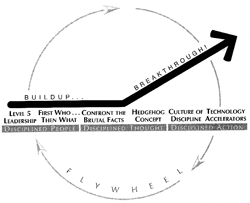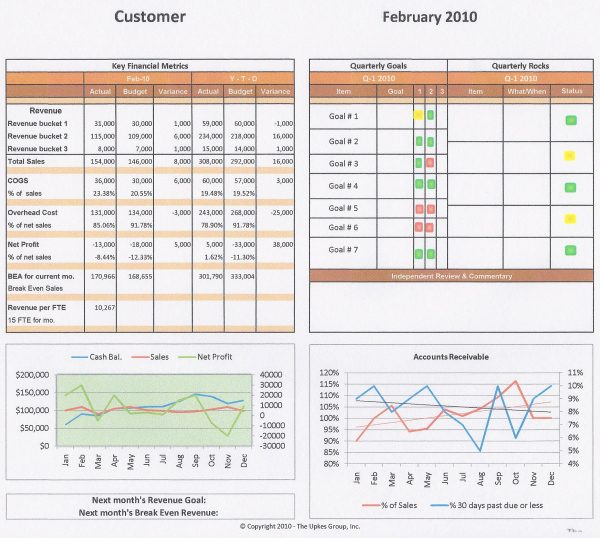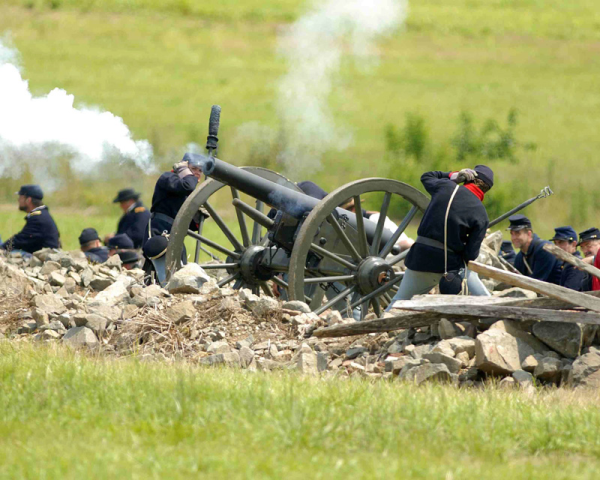At this time of year it’s very common to find people exhibiting high stress levels. A trip for groceries, or to the hardware store, takes a bit longer due to long lines and depending on where you live the weather.
Strategic Discipline Blog
Topics: Accountability, Strategic Discipline, meeting rhythms, metrics, The Power of Full Engagement, stress
Here’s my problem. I’d like to give you as much as I can in small doses the impact ideas you can apply and learn from the Fortune Growth Summit in Phoenix. On my flight back Friday I scanned my notes (reviewing increases retention). As I poured through the pages I attached sticky notes to each segment I felt was worth a blog topic or idea. It required 49 post it’s! Not all of these teach a lesson on Strategic Discipline (What my marketing people demand I stick to in my blogs). Yet all have valuable lessons for your business – anyone of which could provide you with a breakthrough. With that in mind I plan to select the best ideas from the 49 topics I identified and deliver them to you in the days and weeks ahead. Still I thought you might like a quick overview of the speakers and a little on each of their specific topics.
Topics: employee performance, metrics, Growth Summit
Employee Feedback Measurement for Positive Reinforcement
Posted by Douglas A Wick on Mon, Sep 26, 2011
We’ve looked at the importance and frequency of positive reinforcement in previous blogs, How the Best Managers and Leaders Deliver Positive Reinforcement and Employee Feedback – The Need for Frequent Positive Reinforcement. Employee Feedback falls into Strategic Discipline's fundamental practices for effective meeting rhythms. When we address customer and employee feedback in workshops and with our clients, frequently there’s confusion and misunderstanding about what this means. It’s often because companies have their rhythms with regard to employees and staff and forget how critical their happiness and engagement can impact the bottom line growth of their business.
Topics: Employee Feedback, employee performance, positive reinforcement, metrics, productivity
Last blog we discussed the importance of meetings fitting together. Your meetings should cascade or telescope from the first meeting of the year which should be your annual planning meeting. This should be about 2 – 3 days depending upon what you need to discuss, how complex the challenges are that the organizations faces, and when you last did a proper planning and strategy session.
Topics: weekly meetings, Annual Plan, meeting rhythms, metrics, meetings, key performance indicators
Every day, depending on the area you live in, you see this universal symbol telling you when to stop or go. As part of Strategic Discipline we expect our clients to provide metrics for their company, team and individual performance. It’s a part of the weekly meeting agenda. That might seem sufficient to provide accountability, yet when conducting meetings we feel it’s important to dispense with the numbers as quickly as possible in order to get to the meatier topics that can help the business build momentum. The metrics need to communicate quickly whether success is being achieved or there’s work to be done.
Topics: Accountability, priorities, success criteria, Business Dashboards, metrics, meetings, Dashboards, Individual Dashboard
Topics: Accountability, weekly meetings, priorities, Pearsons Law, metrics
Before moving to the agenda on weekly meetings I thought I should approach a question a lot of people have about meetings. Why? Why more meetings?
Topics: Discipline, Accountability, collective intelligence, metrics, meetings
Topics: Bringing Out the Best In People, positive reinforcement, Pearsons Law, metrics
Having a vantage point over your competitor is always a good thing. In war armies seek the high ground to provide an advantage over their enemy. As we move toward another Fourth of July I’ve been spending some of my free time reviewing books on the greatest battle that occurred on American soil. In the three days leading up to July 4th in 1863 the Federal army occupied the high ground around Gettysburg, turning it into an advantage that defeated General Lee’s confederate armies. The victory eventually led to the reunion of our nation. At Gettysburg the high ground determined the victor.
Topics: Strategic Discipline, Business Dashboards, metrics, measurement, Strategic Learning
















.jpeg?width=150&height=135&name=Hand%20with%20marker%20writing%20the%20question%20Whats%20Next_%20(1).jpeg)

